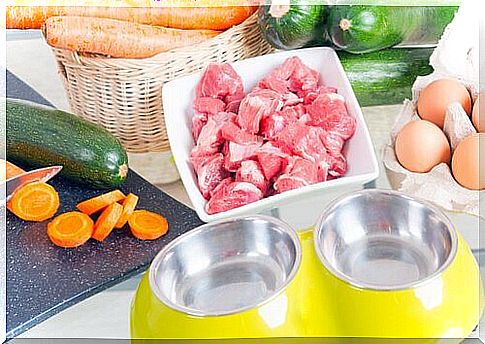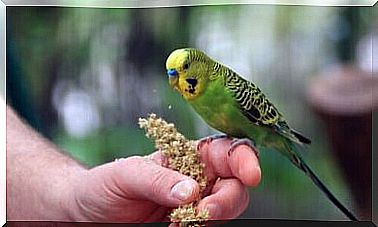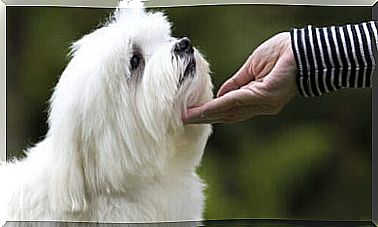How To Prevent Food Allergies In Dogs

Dogs, like humans, can suffer from allergies from eating certain foods. The first thing to consider about this is that you should know how to distinguish a food allergy in dogs from a food intolerance.
Food Intolerances and Allergies
In general, food intolerance causes the dog to expel certain foods by vomiting or diarrhea. And every time the dog eats the same food, he experiences the same rejection.
In contrast, food allergies in dogs often produce a variety of symptoms in the pet. Some of them are: itching in some parts of the body like chest, legs, armpits, anus and ears. As a result of this same bite, the animal scratches itself frequently, which causes redness and burning.
One complication that usually occurs is the infection generated by open wounds from scratches. Red eyes and holes in the coat can be other signs of food allergy in dogs.

The foods that most produce these allergies are products such as chicken, veal, fish, eggs, lamb, corn, soy and wheat. These same ingredients are present in many processed pet foods (animal feeds).
Why does food allergy occur in dogs?
As with humans, some proteins ingested in food are not recognized by the animal’s body. As a result, the body activates its immune system to fight it. When symptoms begin and the dog’s owner suspects a food allergy, he or she should not diagnose or medicate the pet.
Many other diseases have similar symptoms, for example certain types of scabies, insect bites, intestinal parasites, atopy and infections. The veterinarian is the only one authorized to accurately diagnose and indicate the appropriate treatment or solution.
How a Food Allergy in Dogs is Treated
When the veterinarian detects the existence of a food allergy, they usually prescribe a diet in which the animal is deprived of the suspected ingredient. The approximate time for this diet is between 6 and 12 weeks.
After this time, the animal is fed again and observed to confirm if this was the cause of the allergy. This process is called the elimination diet and challenge test.

For those dogs that are allergic to an allergen component, they can be instructed to consume a commercial pet food that contains hydrolyzed protein.
This type of protein does not usually cause an allergic reaction in the dog’s body, as it is broken down by enzymes that produce lighter peptides. These molecules are hypoallergenic and more digestible for the animal.
Instead of these special formulas, in other cases, a homemade diet may be indicated, which allows to control or prevent the ingestion of food allergens. The BARF homemade diet, specially designed for this purpose, is well known.
Another measure recommended by veterinarians, when a very strong allergic reaction is already present, is taking antihistamines and corticosteroids.
How is the BARF diet?
The BARF diet for dogs is the acronym in English of “Biologically Appropriate Raw Food”, which in Portuguese means ” Biologically Appropriate Raw Food “.

It consists of feeding the dogs the ingredients they would choose in a natural environment. Basically, it’s about giving the dog raw meat and vegetable proteins, some oils, yogurt, cheese and some other carbohydrates. These foods must be supplied completely raw or lightly cooked.
Some types of bones can be added to the list, bones surrounded by meat, organ meats, raw eggs and some fruit. Any of these products can cause problems in our pet.
This is like mimicking the ancestral diet of wolves and dogs before the advent of industrial animal feed. Given the concern to know if this raw or semi-cooked food can contaminate the dog with bacteria, the ideal is to freeze the food for at least three days.
A disadvantage of this diet is that its preparation can be laborious, expensive and unbalanced if not well planned. Remember that industrial pet foods calculate the nutritional and vitamin requirements of pets.
As we see, the food allergy problem in dogs is an adverse reaction to a food ingredient, and has different solutions. Any treatment should always be indicated by the veterinarian.









